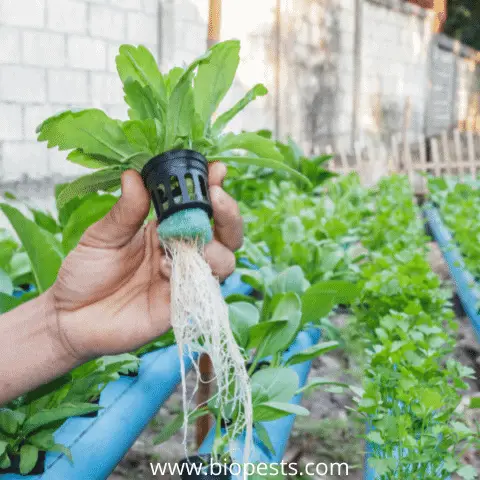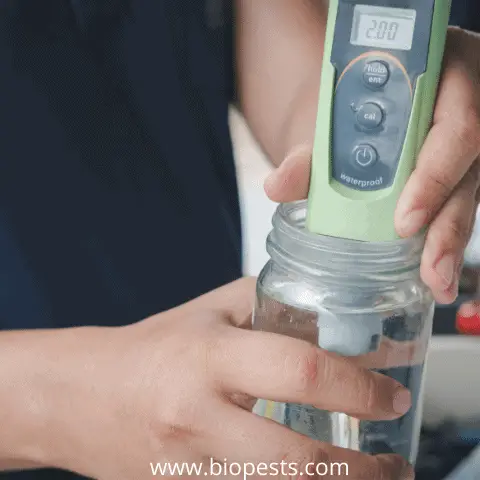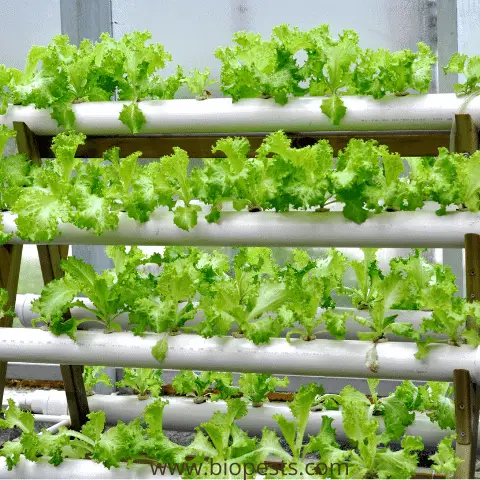Hydroponics refers to indoor agricultural farming carried out without using soil, of which plants rely on nutrient-rich water to grow. Since plants depend heavily on water to absorb nutrients, the water supply must be of the highest quality. But does hydroponics actually require purified water?
Hydroponics requires purified water to ensure plants don’t absorb nutrients from impure water that may contain bacteria or pathogens detrimental to their growth. Impure water may also contain excessive nutrients, plus objects that may clog the hydroponics pipe system.
Read on to understand why purified water is best for hydroponics and what happens if you use impure water for the plants.
Why Is Purified Water Good for Hydroponics?
Purified water is good for hydroponics because it kills microorganisms that would otherwise rob plants of the nutrients they need to grow. By using purified water, farmers can also remove nutrients or suspended objects from impure water.
Hydroponics does not rely on the soil, but rather, it uses water to support plant growth. Like soil that contains nutrients for plants to absorb, water contains nutrients that help plants to thrive.
Because plants rely on water to grow, they need to take only good quality water.

The problem is that water can be contaminated, which is not good for the plants. Therefore, plant growers ensure that their hydroponic plants only live off non-contaminated water, such as purified water.
I’ll now explain more on why water purification is important to hydroponics.
Water Purification Kills Microorganisms
Water from wells, streams, ponds, and lakes contains bacteria and pathogens that can negatively affect the growth of plants in a hydroponics system.
Pythium is the most devastating plant parasite that affects the plants in a hydroponics setting. It attacks the plant’s roots system and causes necrotic lesions on the tip of the roots. This is dangerous because plants absorb all the nutrients through their roots, and if the roots are damaged, the plant will eventually die.
There are no apparent initial symptoms to diagnose a Pythium attack. The only indication is discoloration and a drop in pH, and by the time it is detected, the plants have faced irrecoverable damage.
That is why purifying water is essential as it will avoid this parasitic attack.
Fusarium and Verticillium are other types of fungus found in hydroponics that cause diseases like wilting.
Moreover, many bacterial species present in the water absorb oxygen to thrive. As a result, the dissolved oxygen level in the water reduces, and if you do not remove these species or replenish the dissolved oxygen level in the water supply, the plants will not survive for long.
It Removes Nutrients From Impure Water
Water is a universal solvent and contains many nutrients.
The nutrient solution added in a hydroponics system also includes some of the nutrients found in water. Therefore, putting in a nutrient solution before purifying the water will affect the nutrient proportion required to grow healthy plants.
The hydroponics system uses a specialized nutrient mix to fulfill the requirement of the plants. The primary nutrients that make up the formulation of the nutrient package are:
- Potassium
- Phosphorus
- Nitrogen
Also part of the mix are:
- Zinc
- Magnesium
- Calcium
All these nutrients have a fixed proportion and are varied depending on the plant.
Water also contains nutrients like phosphorus, magnesium, zinc, and calcium. If you do not purify the water before adding the nutrient mix, the level of some nutrients will exceed the level required by the plants, causing a nutrient burn to the crops.
Chlorine is another element that, if present in excess amounts, can cause damage to the leaf tissues of the plant.
Water also contains traces of sodium and sodium chloride. Even in small quantities, sodium can harm the plants by stunting their growth and damaging cell development. It also affects their ability to absorb nutrients from the medium.

The nutrients present in the impure water can also affect the pH of the water, and plants will not absorb any nutrients if the pH of the water is lower than 4 and higher than 8.
Water Purification Removes Suspended Objects
Hydroponics systems use water pumps and pipes to circulate water around the facility. If the water supply is full of suspended objects, it can choke the water lines and halt the system.
Your hydroponics facility’s water source may contain a high amount of sediment and silt if it comes from a local river or lake. If the water containing these objects is not filtered and purified, it will accumulate and obstruct the water supply from pipes over time.
Furthermore, the accumulation caused by these objects will substantially increase your maintenance cost, and you will have to clean your pipes and grow trays regularly. Hydroponics facilities are already expensive to maintain, and this additional cost will further add to the expenses.
How Can I Purify Water?
To purify water from pathogens and fungus, you can use fungicides like Metalaxyl. You can also use ozone and UV sterilization treatment to prevent the spread of Pythium. To remove unwanted nutrients, perform Reverse osmosis.
This technique uses pressure to force the molecules to move from high to low concentrations and get trapped in the semi-permeable membrane.
Plus, you can either use reverse osmosis or the filtration process to remove the suspended objects. The filtration process uses a filtering medium that blocks all the floating items and only lets the water pass.
Final Thoughts
Water absorbs and carries the nutrients to the plants. If the water is clean, the nutrient mix will dissolve better and more minerals and nutrients will be available for the plants to grow adequately.
Plants in a hydroponics system are more sensitive than the plants that grow in soil because they use water as a growing medium, so without proper nutrients, they will die in a few hours or will be affected by any disease.
Using purified water will ensure maximum yield and decrease the facility’s maintenance costs, helping you get a better return in a capital-intensive venture.
Some of the links above are affiliate links, meaning at no additional cost to you, I will earn a commission if you click through and make a purchase.

